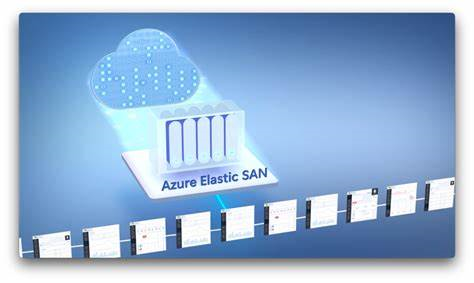Microsoft Azure continues to set the bar high with its latest innovation: Azure Elastic SAN. This release marks the advent of the first fully managed, cloud-native Storage Area Network (SAN) platform. With its suite of features tailored to meet the demands of modern applications, Azure Elastic SAN is poised to affect the way organizations approach storage management in the cloud.
The Azure Elastic SAN service is purpose-built to deliver SAN experiences seamlessly within the Azure ecosystem. From resource hierarchies to dynamic distribution, it offers a comprehensive solution for optimizing performance across connected applications. With support for clustered applications, customer-provided encryption keys, snapshot capabilities, and iSCSI support, Azure Elastic SAN ensures versatility and security at every turn.
One of the primary advantages of Azure Elastic SAN lies in its ability to address the challenges associated with migrating on-premises applications to the cloud. For many customers, the need for a robust SAN platform has been a significant roadblock to migration. With Azure Elastic SAN, these barriers are effectively dismantled, paving the way for smoother transitions to the cloud.
Furthermore, the elastic nature of storage allocation inherent in Azure Elastic SAN enables customers to optimize their storage spend significantly. By centralizing storage management at the SAN level rather than at the application layer, organizations can achieve greater efficiency and cost savings without compromising performance.
It’s worth noting that while Azure Elastic SAN is available in numerous regions, the availability of Zone and Local Redundant storage may vary. This distinction could influence the initial design considerations for organizations leveraging the service. However, Microsoft continues to expand and enhance its offerings, ensuring broader accessibility and functionality over time.
For more information on the Azure Elastic SAN service and its capabilities, visit the official announcement on the Azure Blog here.




